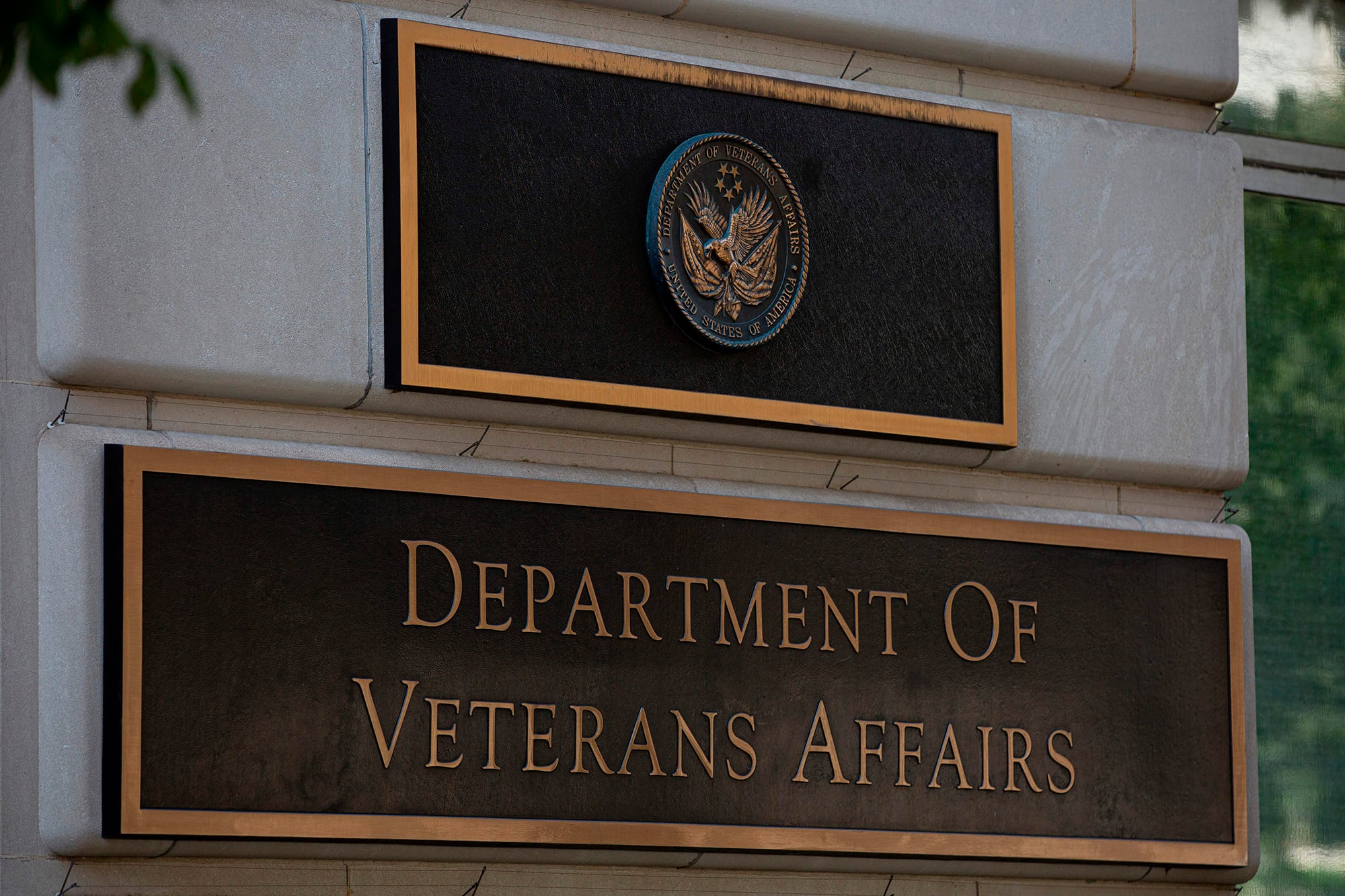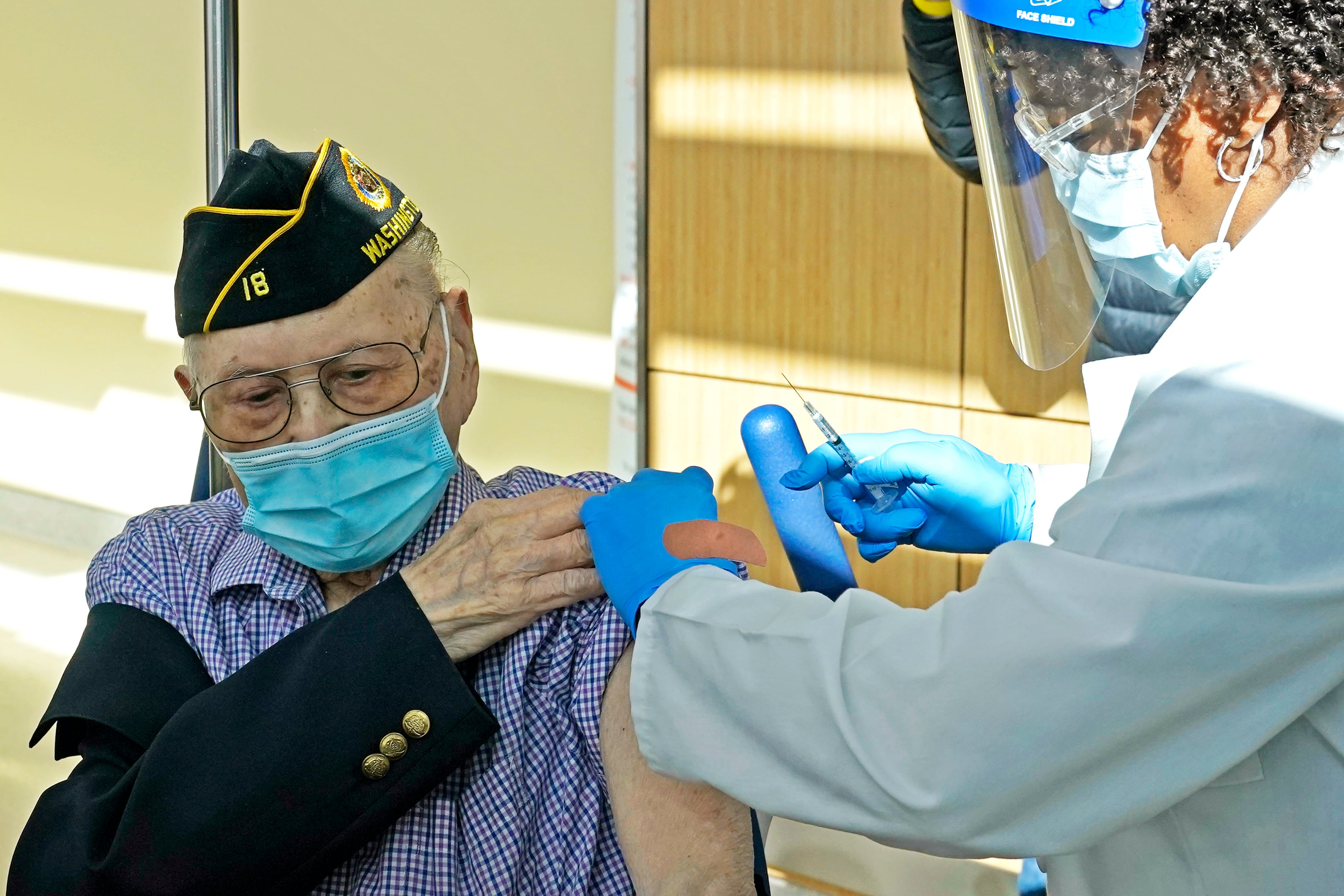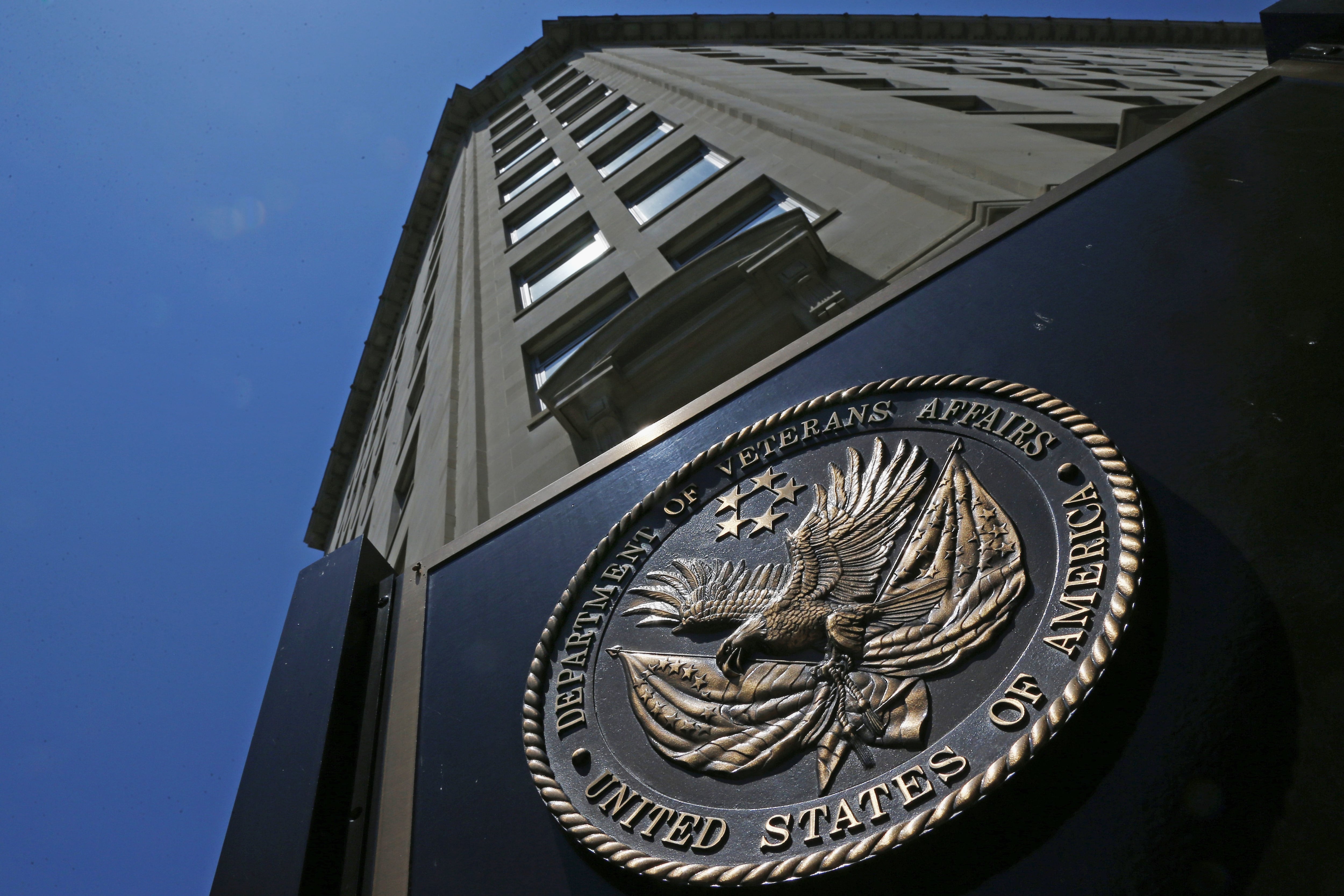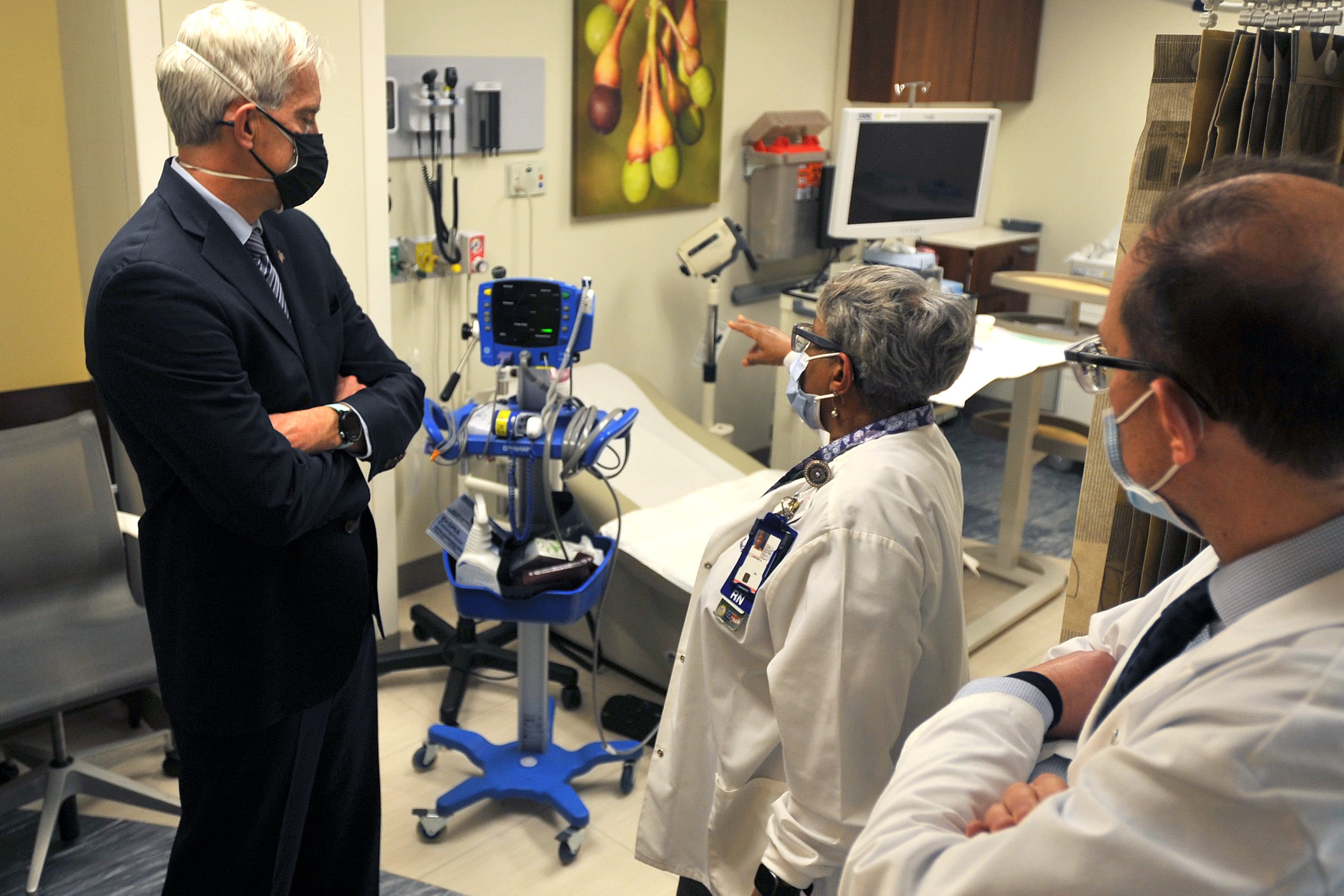After 20 months of pandemic footing at the Department of Veterans Affairs, Secretary Denis McDonough knows his employees are tired.
He also knows there is more work to come.
“Am I worried about burnout? I am. But I’m worried about burnout in the healthcare sector across the country,” he said. “This is an issue. People are working really hard. It’s really challenging. And it’s no different for VA than it is for other hospitals and healthcare systems across the country.”
The department has dealt with more than 368,000 cases of coronavirus since the start of the American pandemic, including almost 28,000 cases among employees.
RELATED

McDonough praised his staff’s work so far — which has included fully vaccinating more than 4.1 million individuals and administering about 500,000 more booster shots — as impressive and inspiring.
“We’re providing more care, more benefits to more veterans today than ever,” he said. “That’s a testament to our workforce.”
But McDonough also acknowledged that the next year won’t be any lighter of a workload for the roughly 400,000 department employees tasked with bringing down benefits backlogs, catching up on veterans’ missed medical appointments, and hiring more staff to make up for employees who may depart because of the department’s vaccine mandates.
The VA Secretary sat down with Military Times recently to discuss the pandemic, the VA workforce and the challenges ahead for the massive bureaucracy when it comes to helping veterans.
Portions of this transcript have been edited for brevity and clarity. For McDonough’s comments on veterans benefits and care, click here.
RELATED

Military Times: You’ve been in office for about 10 months now. How different is VA from when you started?
Denis McDonough: One thing is constant, is that our professional workforce has been working tirelessly since the start of the pandemic and [they] continue to do that.
The National Cemetery Administration never closed down … The Veterans Benefits Administration adjudicated more claims last year than any other year but one in history.
And the Veterans Health Administration, obviously our hospitals and clinics, have continued running, and the result of that is we’re now providing more care and more benefits to more veterans than at any time in the history of VA.
I’m really proud of that and it has really nothing to do with me. It has a lot to do with this workforce that has persevered through this pandemic.
But we have also made some important changes. We want to be transparent with the press, with Congress and with our veteran service organization partners so that they understand what we’re doing and why we’re doing it. You may not always agree with what we’re doing, but you’re not going to be wondering why we’re doing what we’re doing.
I think that’s a change and that’s a change I’m very proud of.
Another thing is we’re also changing to reflect and better serve the veteran force of today. The fastest growing part of the veterans community is women. And it is extraordinarily important to the president that every veteran feels fairly treated, safely cared for at any VA facility. That’s a major priority of ours, and we’re carrying that out aggressively.
[The president] has also been exceedingly clear about is that we need to care for veterans of the Gulf War generation. President Biden is the first president in the 30 years of war in places from Somalia, Uzbekistan, and all those places in between — including Afghanistan and Iraq — to have established presumptions for conditions that our veterans suffer from their time there.
We’re not only adjudicating thousands of those claims, but we’re now paying out millions of dollars and richly deserved benefits.
We’re not done. But it’s a really important start.
MT: Talk to me about your relationship with President Biden and how often do you get his ear on these issues?
DM: I do get a chance to spend time with him, with his team. He has been very generous to invite me over on occasion. He takes this very seriously. And [First Lady] Dr. Biden takes it very seriously, and they are very proud of the fact that they are a military family serving in the White House.
The President feels very strongly a commitment to veterans. He calls it our only sacred obligation, to care for veterans when they return home from service. And Dr. Biden with the stand up of Joining Forces has manifest that very clearly.
Consistent with his commitment on these issues is a relationship with him and with his senior team that allows us to make sure that we’re getting a clear signal from him on what his priorities are, where he’s demanding accountability from us.
He made it very clear to me what my job is here. It’s to fight like hell for vets, and he lets me know when I’m not doing a good job. And that’s why you’ve seen [investments] in VA infrastructure, which is really critical.
Moreover, in the American rescue plan, he fought for and garnered for us $17.5 billion dollars, which importantly includes $14.5 billion to invest in timely and urgent care for our veterans who may have had to postpone care during the course of the pandemic. We’re seeing them come back into the system in significant numbers.
Because the president is fighting for us, we have the resources to care of those vets.
RELATED

MT: You mentioned the amount of work facing VA staff. How do you deal with the potential burnout of staff?
DM: The thing I believe I can do most profoundly is do what I have been doing, which is to defend that workforce, and to tell them what I believe and what the president believes, what I believe Congress thinks, which is they’re doing really good work. And we appreciate them for it.
There’s another challenge that we face, which is how we work in a country that has changed in the context of pandemic.
So while the National Cemetery Administration and Veterans Health Administration have been on duty stations, either in cemeteries or at our hospitals and clinics and our health centers, our [benefits] personnel — about 30,000 people — they’ve been teleworking.
As we move to the future of work here, we’re going to be listening to the workforce about how they can work most productively to get the work done. That’s another area that we’re working through.
The last point, which is part of your questions — At the level of service you’re providing, people have to wait too long in some cases. Why do you want to add more service? Aren’t you going to make more people wait longer?
That’s a fair question. I don’t think it’s a good reason to deny somebody what he has earned or she has earned because we can’t give it to them fast. That’s our problem.
So how are we addressing that? We’re changing how we do work. Healthcare, including mental health care, overwhelmingly now vets have another new option, which is telehealth. Adjudication of claims, the Board of Veterans Appeals now is doing those by video. That’s important.
One thing that we’re really testing now and we’re hoping to go beta soon is on how we automate claims. We have pockets of digital data all over VA. Do we really have to keep bringing in a vet for another exam when we have access to her health record? We can make a determination about the particular malady.
That will be a game changer for us. We’re testing, we’re exploring and we’re hoping to go beta on some new options here soon.
But if we stand pat and say, “well, you know, we’re helping enough vets, and by the way, if we help more than it’s going to be harder work,” that will be the death of us. If we innovate, including by making good use of these digital options, then we can fulfill the responsibilities the president is giving us.
RELATED

MT: On the telework options, how much flexibility do you have?
DM: Even pre-pandemic there actually was quite a bit of telework. The Veterans Benefit Administration has been moving more and more to remote work over time.
We have a lot we have the flexibility we need. I want us to be an employer that is invested in our workforce. We’ve spent a lot of time repairing relationships with the unions and with our workforce. And so we’re working this through with our workforce.
What’s not negotiable is performance of tasks and the delivery of service to veterans. That’s what our job is. And as I just said, last year has been pretty good. We’re working this through with the Office of Personnel Management, with the White House and Office of Management and Budget and with Congress. Nobody will be surprised by this. But we think that we have the flexibility.
RELATED

MT: Talk about the employee vaccine mandate for coronavirus.
DM: As of today 86 percent [of staff] have uploaded their documentation. We did a flu mandate last year for the first time, and about 5.6 percent of people asked for a religious exemption. We don’t know for certain yet, but my anticipation is that we have more than 5.6 percent asking for religious exceptions this year.
We’ll continue working through the disciplinary process which we’ve started, counseling those members of the workforce who have not yet uploaded their information, or who have told us that they may refuse or something like that. We’re working through all those pieces. When we have the full picture, we’ll brief that up.
MT: Has there been any discussion about requiring VA patients or anybody who comes down to a medical center to be vaccinated?
DM: Nope.
MT: Why not?
DM: Because I think we are not in a position to enforce it. We don’t want to be in a position where a veteran feels compelled to not come in for care. We want a veteran, if he’s not feeling well, to be incentivized to come in for care.
And we think the best way to do that is to give that factor and give her that assurance that we’ve taken every step we can to ensure that her treatment is as safe as it can be. That’s why I did that mandate for our health care professionals.
MT: How do you think VA is viewed right now? You’ve followed all the ups and downs of VA in the past three administrations. What do you think of the public perception of VA?
DM: If we screw up, we should acknowledge and we should fix it. And the press is a big part of making that happen …
Here’s the hard truth: The older and more male you are, the more you trust VA. The younger and more gender diverse or more racially diverse you are, the relatively less you’re satisfied with VA.
That’s data that we are using to prove our performance. And I see it all the time. You see it in the program offices here, but you see when I’m on the road, when I’m visiting our facilities,
Employees take great pride in their [performance] numbers. But we also then measure performance on how they’re using the data. Not only what are you learning, but what are you doing with what you’re learning?
I feel pretty good about where we are, but I don’t feel satisfied. One example: For outpatient care right now, there is 90 percent overall satisfaction. In my view, that’s not the ceiling, that’s the floor.
We also need that 90 percent across all eras, and across women and men, so that we’re meeting a higher standard. And I’m antsy about and anxious about increasing performance.
Leo covers Congress, Veterans Affairs and the White House for Military Times. He has covered Washington, D.C. since 2004, focusing on military personnel and veterans policies. His work has earned numerous honors, including a 2009 Polk award, a 2010 National Headliner Award, the IAVA Leadership in Journalism award and the VFW News Media award.








